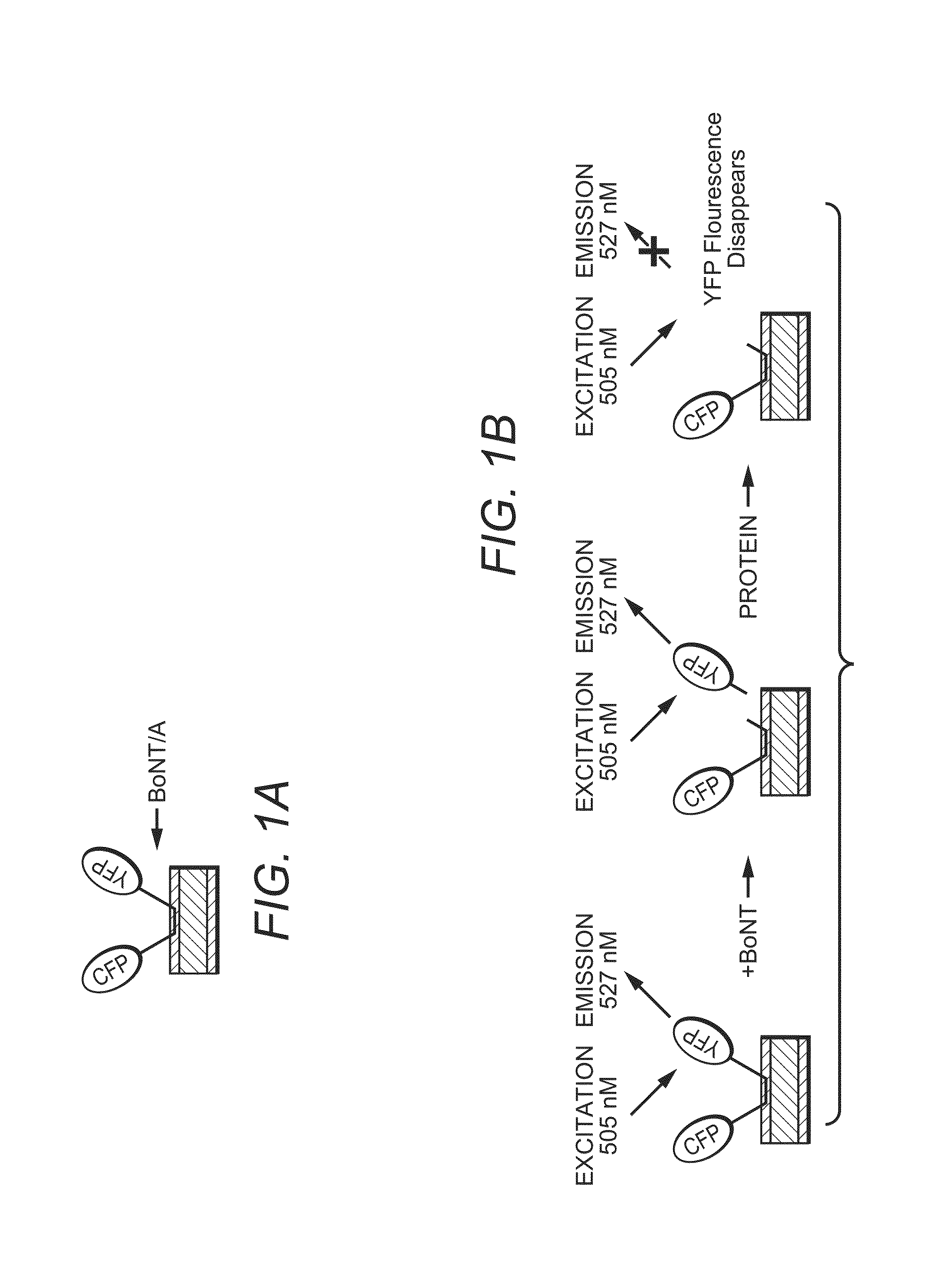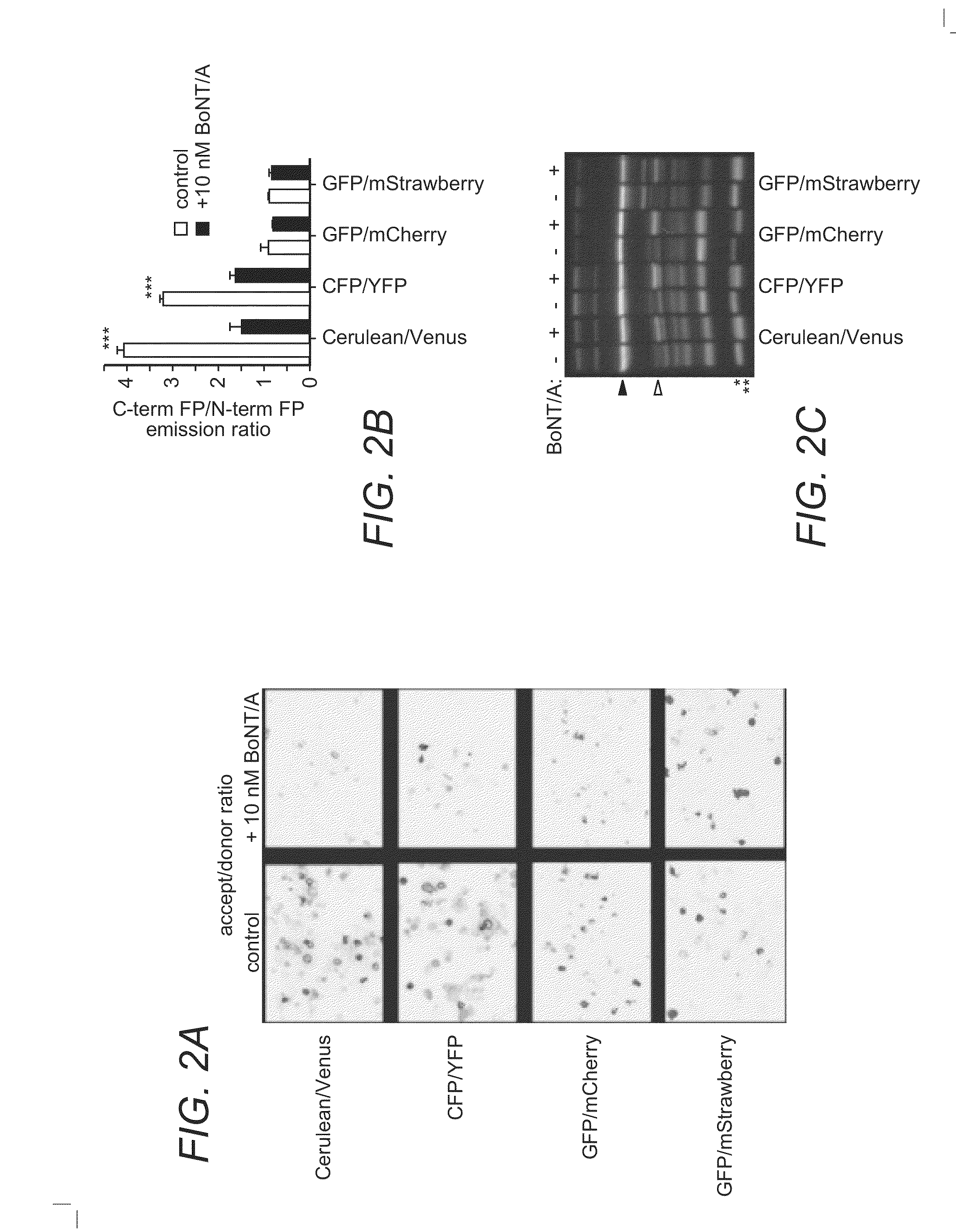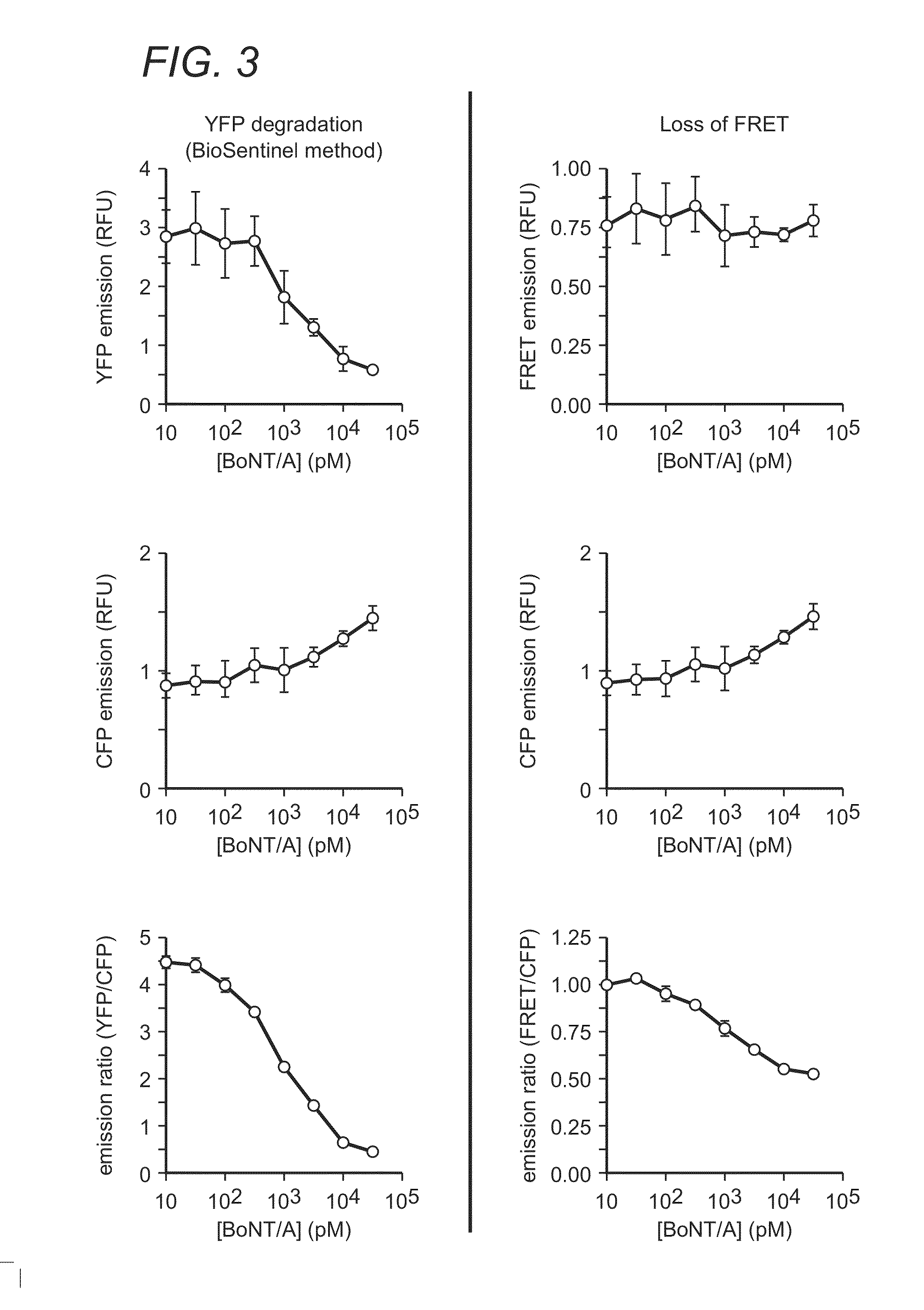Fusion proteins, cells, and kits for characterizing botulinum toxin
a technology of fusion proteins and kits, applied in the field of protease assays, can solve the problems of large number of mice, inability to study the catalytic kinetics of toxins, and serious harm or even death of victims, and achieve the effects of reducing chloride sensitivity, rapid maturation, and increasing brightness
- Summary
- Abstract
- Description
- Claims
- Application Information
AI Technical Summary
Benefits of technology
Problems solved by technology
Method used
Image
Examples
Embodiment Construction
[0035]Various objects, features, aspects and advantages of the inventive subject matter will become more apparent from the following detailed description of preferred embodiments, along with the accompanying drawing figures in which like numerals represent like components.
[0036]FIGS. 1A and 1B diagram a construct and an exemplary assay in which BoNT / A cell-based reporters are used to detect BoNT / A activity by loss of YFP fluorescence.
[0037]FIG. 1A schematically depicts BioSentinel's BoCell™ A BoNT / A construct. The reporter fluorophore, YFP, and the normalization fluorophore, CFP, are coupled by a cleavage sequence, SNAP-25 (green). SNAP-25 palmitoylation localizes the reporter to a plasma membrane.
[0038]FIG. 1B shows detection of BoNT / A activity by loss of YFP fluorescence. The YFP moiety is directly excited leading to fluorescence emission in the absence of BoNT / A. Cleavage of the reporter by BoNT / A releases a C-terminal reporter fragment containing the YFP moiety into the cytosol....
PUM
 Login to View More
Login to View More Abstract
Description
Claims
Application Information
 Login to View More
Login to View More - R&D
- Intellectual Property
- Life Sciences
- Materials
- Tech Scout
- Unparalleled Data Quality
- Higher Quality Content
- 60% Fewer Hallucinations
Browse by: Latest US Patents, China's latest patents, Technical Efficacy Thesaurus, Application Domain, Technology Topic, Popular Technical Reports.
© 2025 PatSnap. All rights reserved.Legal|Privacy policy|Modern Slavery Act Transparency Statement|Sitemap|About US| Contact US: help@patsnap.com



